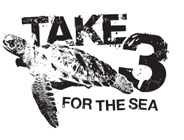Ghost Nets – Supernatural or Super harmful?
Ghost nets may sound supernatural, but the reality is actually much more frightening. Since the 1960s, commercial fisheries have replaced nets and ropes made from natural fibres such as hemp, cotton and jute with those made from nylon and other strong and durable plastics. The problem? Plastic nets and ropes do not decompose and therefore remain in the ocean for many years if cast and not retrieved.
Ghost nets are estimated to make up 10% of ocean plastic pollution but form the majority of large plastic items littering the seas. What’s alarming is that these abandoned fishing nets claim the lives of numerous marine creatures each year. Due to their thin, transparent appearance, many animals cannot see the danger they pose. Marine animals, from crustaceans to fish to dolphins and seabirds become ensnared in the abandoned nets where they can die from starvation, suffocation or drowning.

Furthermore, while plastic nets do not decompose, they break down into ever smaller pieces, called microplastics and nanoplastics. These tiny particles bring their own challenges for marine life. Many animals mistakenly ingest them believing them to be a food source. This can cause injury, suffocation, starvation and often death.
Animals at risk: Turtles, in particular, fall victim to ghost nets. These gentle creatures often use objects in the ocean to hide from predators while searching for food. Ghost nets, with their deceptive appearance, make turtles highly susceptible to entanglement, putting their populations at risk.
Sea coral is also endangered by ghost nets. Strong water currents can pull the nets down to coral reefs where they are dragged by the currents, damaging the coral as they go.
Conservation Efforts: In response to this growing crisis, organizations such as the World Wildlife Fund (WWF) have been actively advocating for policy changes in fishing practices to control the accumulation of ghost nets in the ocean. WWF’s proposed measures include making fishing gear traceable, identifying and penalizing those who discard ghost nets, and encouraging the use of recycled nets through refundable deposits.
The Ghost Nets Initiative: In 2022, Parks Australia launched the Ghost Nets Initiative, a collaborative effort involving government agencies, indigenous groups, environmental organizations, and private industry. This initiative focuses on deploying new technology to detect, collect, and dispose of ghost nets more efficiently.

What can I do?: Individual actions, when combined with collective efforts, can make a significant difference in addressing the problem of ghost nets in the ocean and protecting marine ecosystems. Here are some things anyone concerned about ghost nets can do:
- Raise Awareness: Educate yourself about the issue of ghost nets and share information with your friends, family, and social networks
- Support Organizations: Contribute to or volunteer with organizations and initiatives that work to combat ghost nets and promote ocean conservation.
- Responsible Fishing Practices: If you’re a fisher or know someone who is, promote responsible fishing practices, including proper disposal of old or damaged fishing gear.
- Report Ghost Nets: If you come across ghost nets, report their location to local marine conservation organizations so the nets can be removed
- Advocate for Policy Changes: Contact your local representatives and advocate for stronger regulations and policies related to fishing gear management and disposal.
- Reduce Seafood Consumption: Make more conscious decisions when eating seafood, or avoid it all together.




